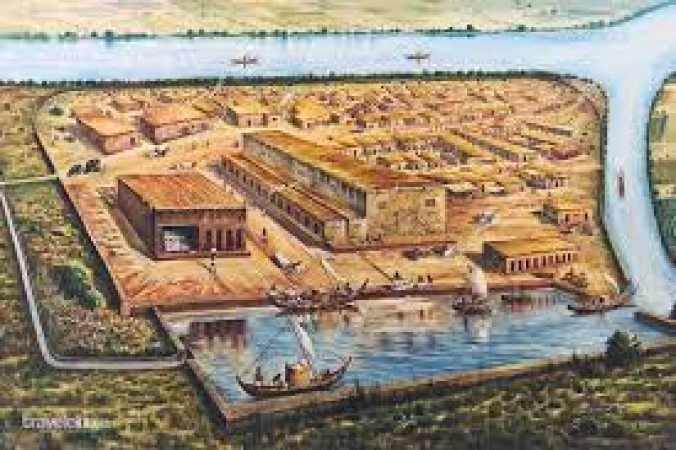
Lothal, an ancient city located in present-day Gujarat, India, is a remarkable archaeological site that provides invaluable insights into the Indus Valley Civilization, one of the world's oldest urban civilizations. Its name, "Lothal," translates to "the mound of the dead," a testament to the intriguing mysteries that lie buried beneath its ancient soil. Lothal, the ancient city of the Indus Valley Civilization, remains a treasure trove of archaeological wonders, offering a window into the past and shedding light on the cultural, economic, and technological advancements of an ancient society. As ongoing excavations continue to unearth new artifacts and revelations, the legacy of Lothal continues to captivate the world, reminding us of the enduring quest to unravel the mysteries of our collective human heritage.
Lothal dates back to around 2400 BCE and was a prominent maritime city of the Indus Valley Civilization, also known as the Harappan Civilization. Situated along the banks of the Sabarmati River, Lothal's strategic location played a vital role in its growth as a thriving trade center, connecting it with other cities and regions. One of the most distinguishing features of Lothal was its advanced dockyards and maritime trade. The city's well-constructed dock basin facilitated trade with distant lands, making it an essential hub for the exchange of goods such as beads, semi-precious stones, ivory, ceramics, and copper. Lothal's urban planning was a testament to the sophistication of the Harappan civilization. The city was laid out in a precise grid pattern, with well-structured houses, streets, and drainage systems. The Great Bath, an impressive water tank, serves as an example of their expertise in engineering. Lothal was divided into two main parts: the Citadel and the Lower Town. The Citadel, situated on a raised platform, housed the ruling elite and administrative buildings. The Lower Town comprised residential areas and artisan workshops, reflecting the social stratification prevalent during that time.
The Indus Valley Civilization had its own system of writing, which remains undeciphered to this day. Archaeological findings at Lothal include seals with script-like symbols, providing tantalizing clues about the language and record-keeping practices of the ancient inhabitants. Lothal's decline remains shrouded in mystery. Some theories suggest that changing patterns of river courses and siltation might have contributed to its abandonment. Over time, Lothal was buried and forgotten, only to be rediscovered by archaeologists in the mid-20th century. Systematic excavations at Lothal have revealed a wealth of artifacts, pottery, tools, and structures that offer valuable insights into the daily life, technology, and cultural practices of the Harappan people. The findings have contributed significantly to our understanding of the ancient Indus Valley Civilization. In recognition of its historical significance, Lothal was declared a UNESCO World Heritage Site in 2020. This designation highlights its importance in preserving human history and the need for further research and conservation efforts. Lothal stands as a symbol of the ingenuity and resilience of ancient human civilizations. Its advanced urban planning, trade networks, and engineering achievements showcase the remarkable progress made by the Harappan people.
Also read - What the Vedas and Puranas of Hinduism Say About the Worship of the Peepal Tree
If you are going on the Kailash Mansarovar Yatra, do not forget to visit these places as well
Brahma Hatya: Understanding the Grave Sin in Hinduism